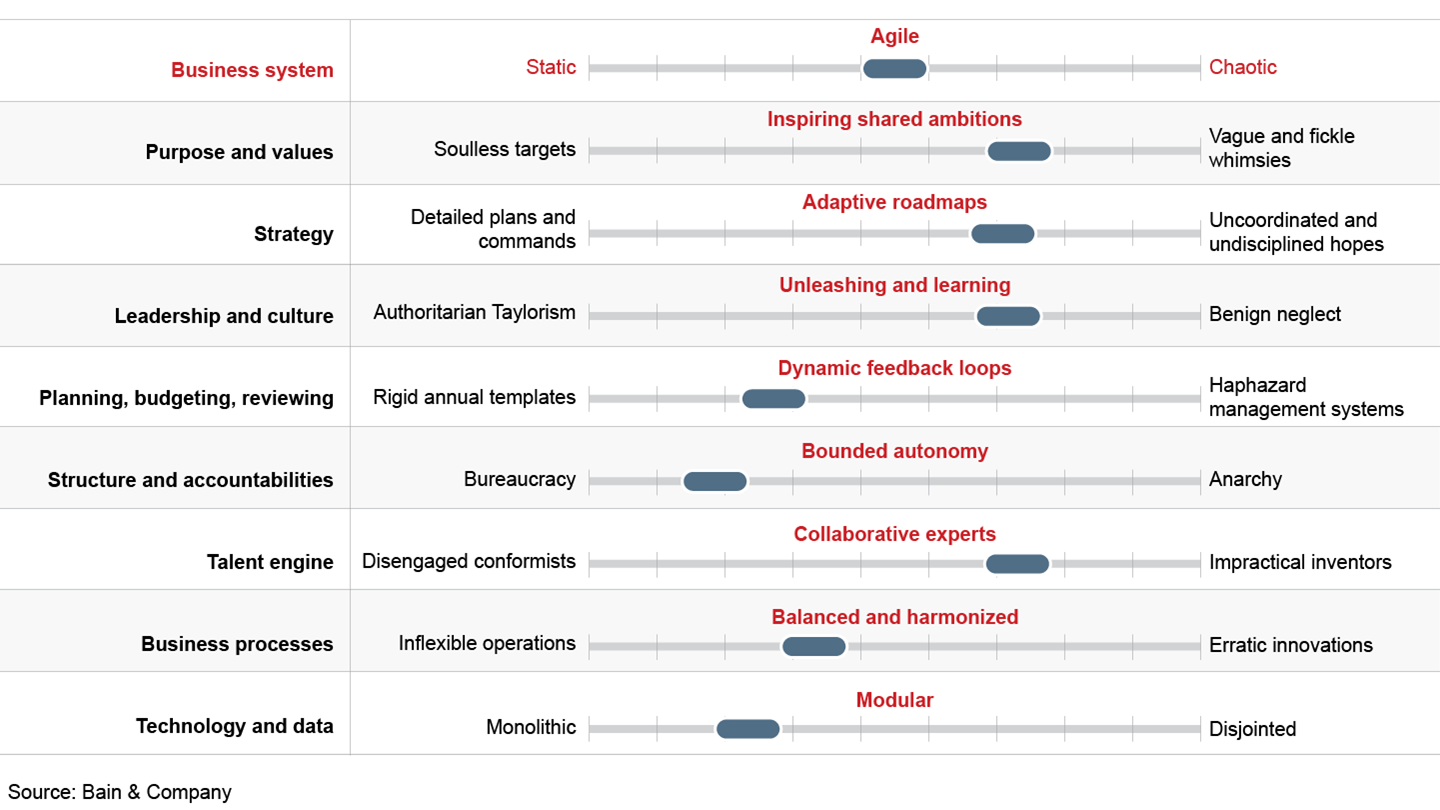About
The (Un)balanced Company
The (Un)balanced Company
The leadership of an Agile enterprise prioritizes, sequences and harmonizes various activities to hit the right balance.
About
The leadership of an Agile enterprise prioritizes, sequences and harmonizes various activities to hit the right balance.
Agile and bureaucracy are like oil and vinegar: They are good together, but they don’t mix easily.
Every company must run its businesses. It must be good at operations. Every company must also change the business, continuously introducing not just new products and services but also new operating methods and procedures. It must be good at innovation. Although these tasks require different skills, they are not enemies. They are complementary, interdependent and mutually beneficial. They need each other to survive.
If you are disappointed in your company’s performance, feeling a little unbalanced, and wondering whether to nudge the organization toward doing less or more innovation, chances are good that the right answer is more. Most large companies today have tilted too far toward bureaucracy, starving innovation, while more than 90% of the studies we found conclude that innovation improves business results.
The solution isn’t to tip the scale all the way in the other direction, however. Insufficient emphasis on operations creates chaos—poor quality, high costs, and dangerous risks to customers and to the business. Better to harmonize innovation and operations. Stick with bureaucratic rules and hierarchies where best, and instill a healthy mixture of Agile wherever it is appropriate.
The leadership of an Agile enterprise prioritizes, sequences and harmonizes various activities to hit the right balance (see Figure 1). Similar to a skilled music mixing engineer, part artist and part scientist, when the treble is too harsh but very hard to change, they tame it by turning up the bass.

Agile methods, like all other management tools, have strengths and weaknesses. Small, autonomous Agile teams are happier, faster and more successful, but they also require more coordination and more frequent planning and funding cycles. Agile teams eliminate layers of hierarchy, but fewer layers mean fewer title changes and less frequent promotions. Failure to anticipate and address such challenges will confuse and disappoint team members. The best approach is not to choose Agile over all other management approaches but rather to learn when, where and how to use it in combination with other tools.
Sign up to start receiving alerts when we publish new content on the Agile topic.
Subscribe Now

